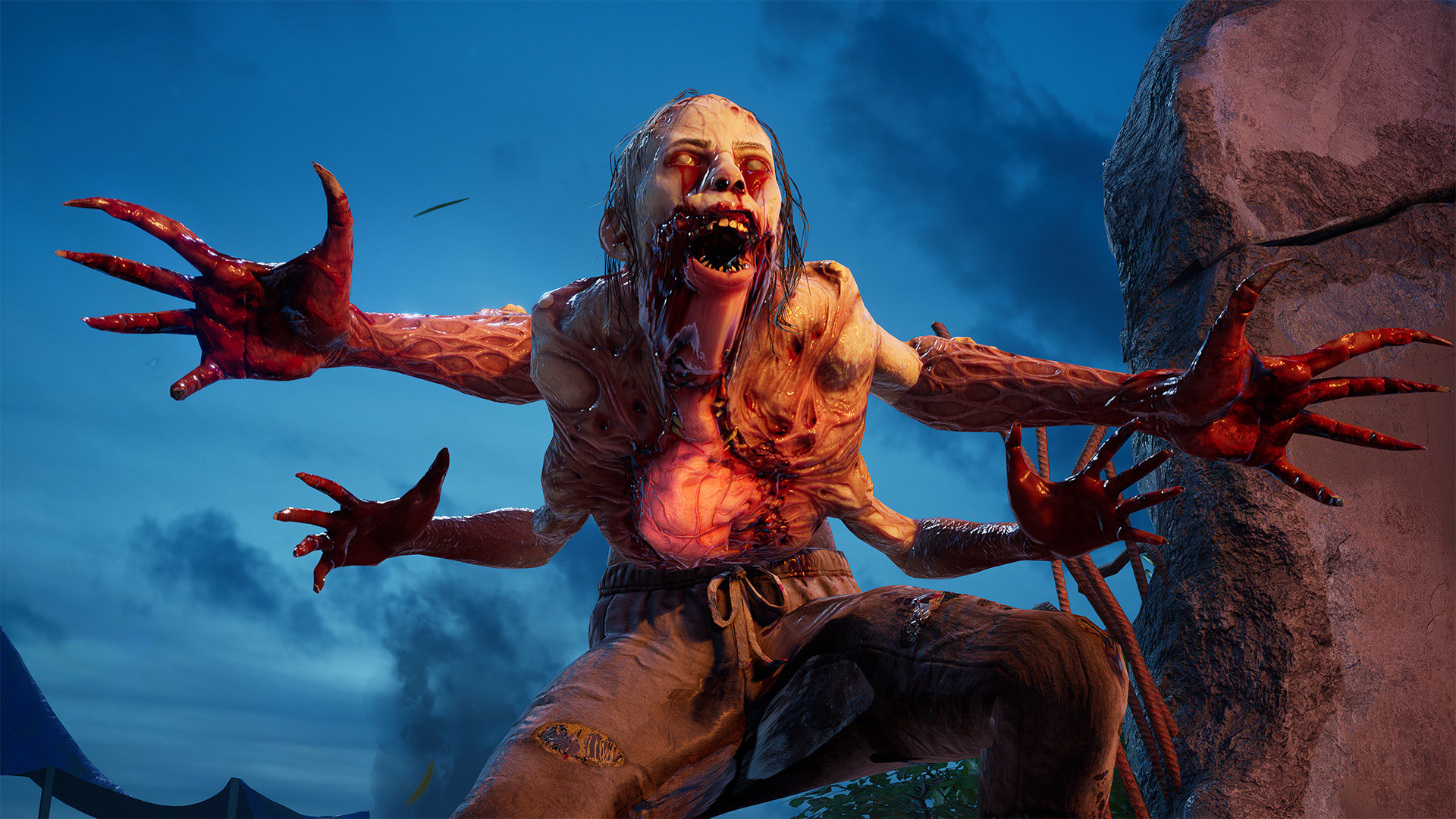DLSS Comes to Ten New Games This Month, Including Some Old Favorites
Surprisingly, Rise of the Tomb Raider from 2015 is also getting DLSS 2.0 support
October is a big month for Nvidia's DLSS technology, with ten more titles getting DLSS 2.0 or later (most are likely using 2.3.1 now). DLSS requires an RTX GPU, which are among the best graphics cards though they remain difficult to find in stock. If you have a card already and plan on playing any of the following games, you're in luck. Along with the news on the latest DLSS updates, Nvidia also released its 496.13 drivers today — a rather large numbering jump from the previous 472.12 drivers.
Back 4 Blood, a first-person zombie shooter, launches today, while other games either already launched or will come later this month. The remaining nine games include the Crysis Remastered Trilogy, Baldur's Gate 3, Chivalry 2, Sword and Fairy 7, Alan Wake Remastered, F.I.S.T.: Forged In Shadow Torch, and Swords of Legends Online. DLSS 2.x support is also coming for both Shadow of the Tomb Raider and Rise of the Tomb Raider, the latter of which came out in 2015.
We were very surprised to hear that Rise of the Tomb Rader would be receiving a DLSS update at all, considering the game is over five years old now. Traditionally, DLSS only gets implemented in modern titles, not ones made years ago that are no longer supported with regular updates. But Rise can still be quite demanding, and apparently Crystal Dynamics felt it was worth doing an upgrade.
If games this old can get full DLSS support, we could very well see other classic titles that were made years ago receive the DLSS treatment. (I'm personally hoping Deus Ex: Mankind Divided is one of those titles).
Shadow of the Tomb Raider originally supported DLSS 1.x, after the ray tracing patch came out, and the new update from 1.x to 2.x is also great to see. That leaves Battlefield V as one of the few games to still use the original DLSS algorithm, with the other major DLSS 1.x titles (Metro Exodus and now Shadow) having now made the jump to 2.x. Maybe one day EA and DICE will give the green light on a small DLSS 2.0 patch, especially since Battlefield 2042 will use the latest version.
DLSS Performance Benchmarks
Nvidia tested eight of the ten games in DLSS performance mode on several RTX 30- and 20-series GPUs, showcasing the immense FPS improvement that can be seen by switching DLSS on. Of course, Nvidia focused its testing on the settings that show the largest gains, namely 4K using DLSS performance mode (4x upscaling from 1080p). We generally prefer the quality mode (2x upscaling), or perhaps balanced mode (3x upscaling), which don't boost performance as much but also provide better image quality — only quality mode really has "visually lossless" image fidelity in our experience.
In performance mode, most titles received at least a 50% jump in framerates over native rendering. Some titles are seeing even better results, with over a 2x FPS improvement. Not surprisingly, the more complex a game is on the rendering side of things, the bigger the gains from DLSS. Alan Wake Remastered, Back 4 Blood, Baldur's Gate 3, Chivalry 2, Rise of the Tomb Raider, and Swords of Legends all use traditional rasterization techniques, while Crysis Remastered Trilogy, FIST, Shadow of the Tomb Raider, and Sword and Fairy 7 use one or more ray tracing effects. Note that Alan Wake Remastered also appears to have a 120 fps framerate cap (or perhaps it hit a CPU bottleneck at around that speed).
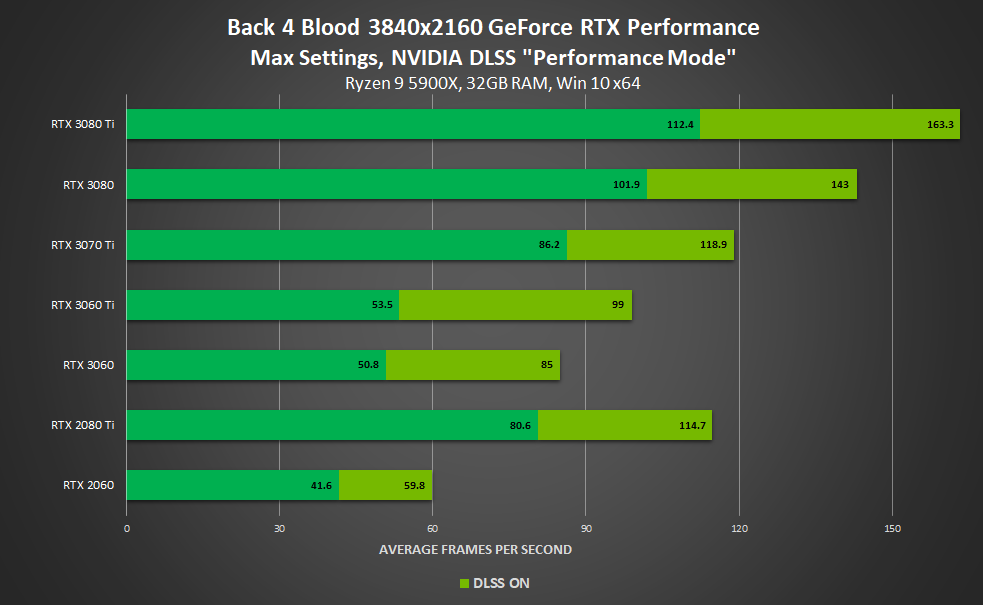
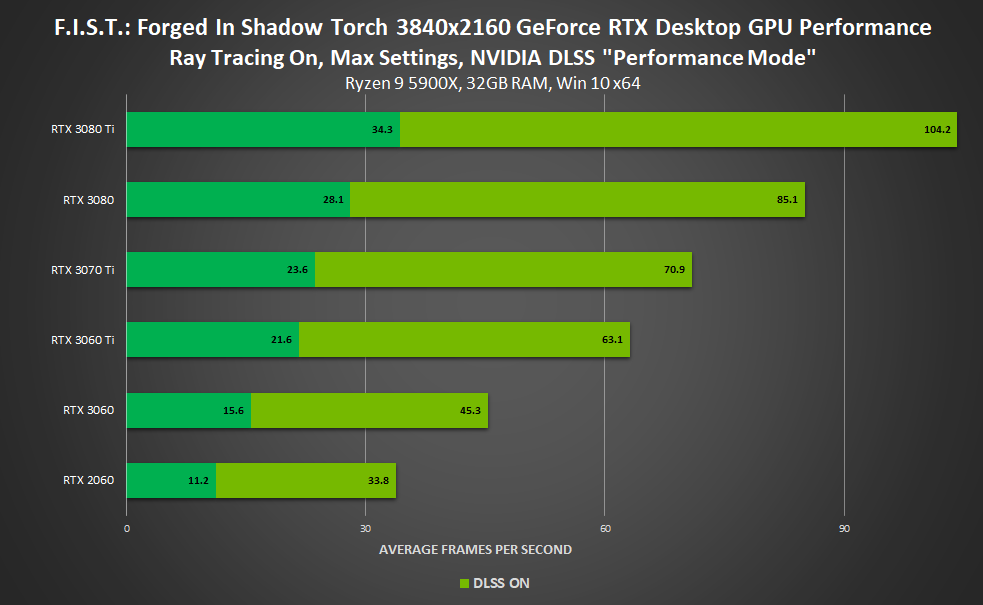
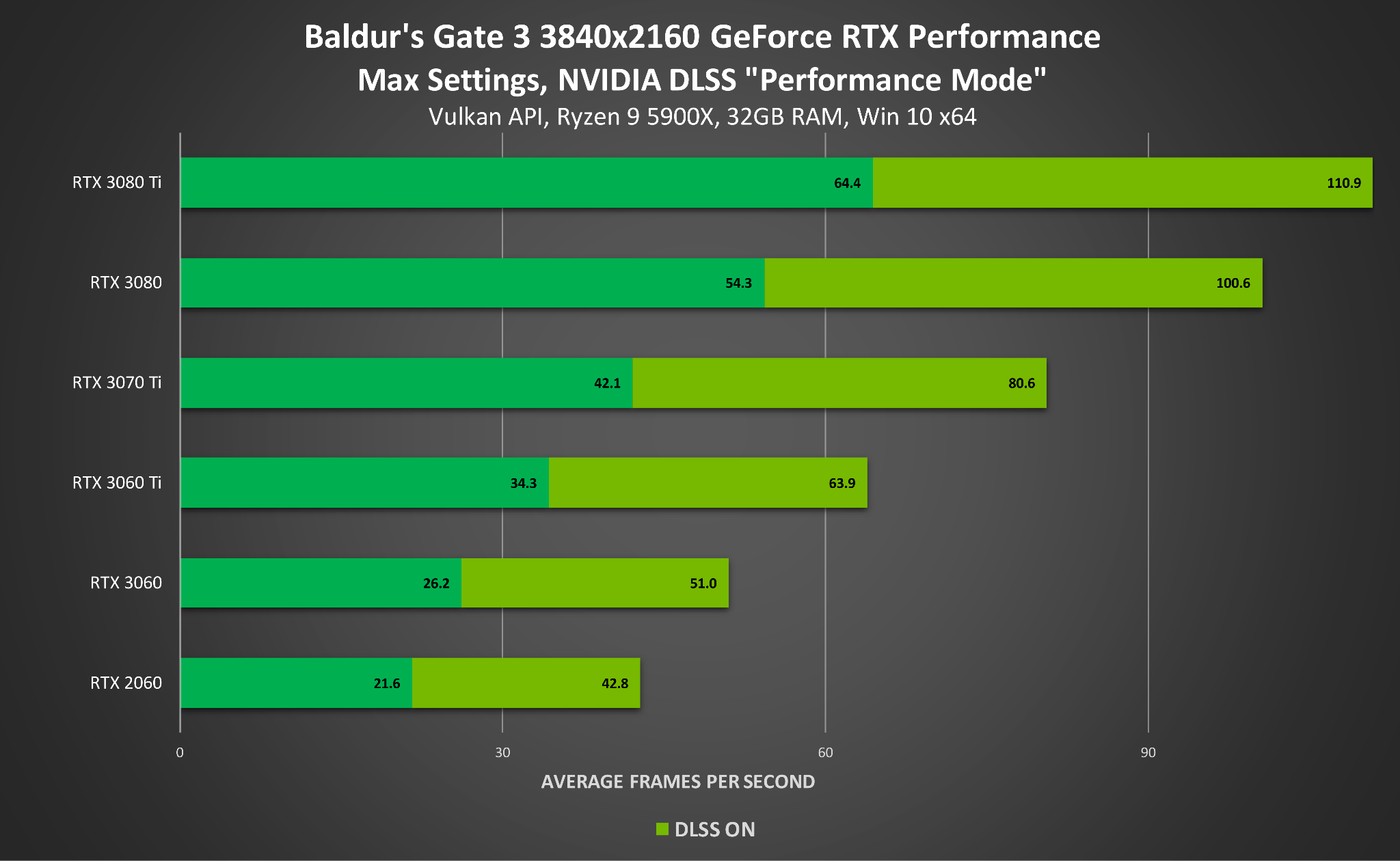
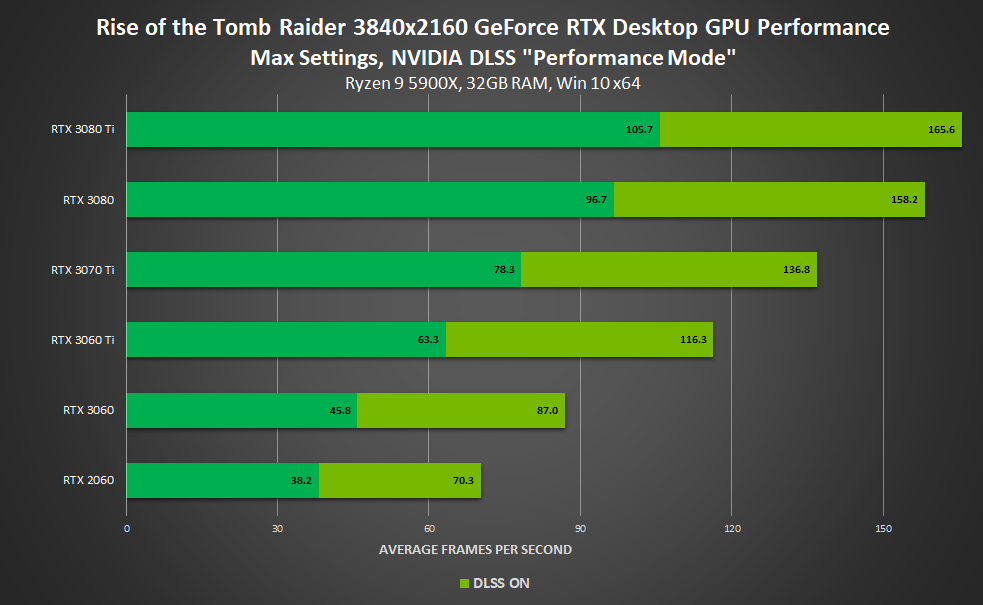
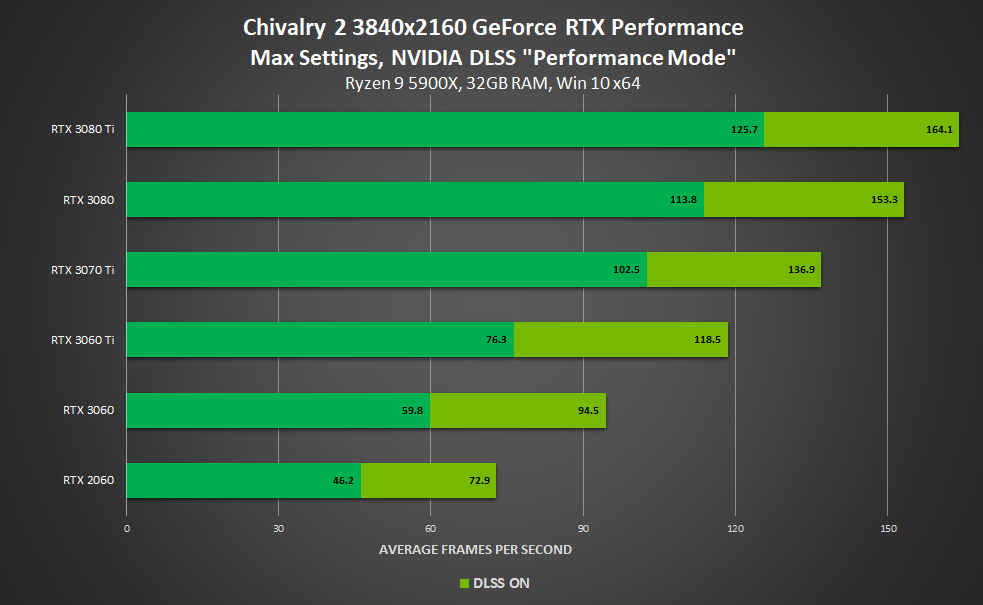
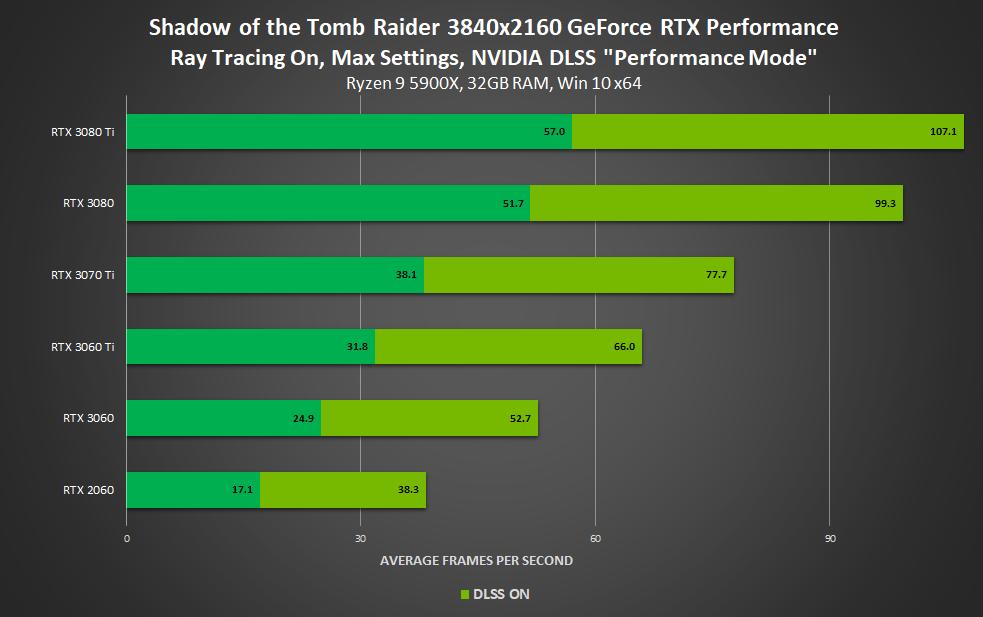
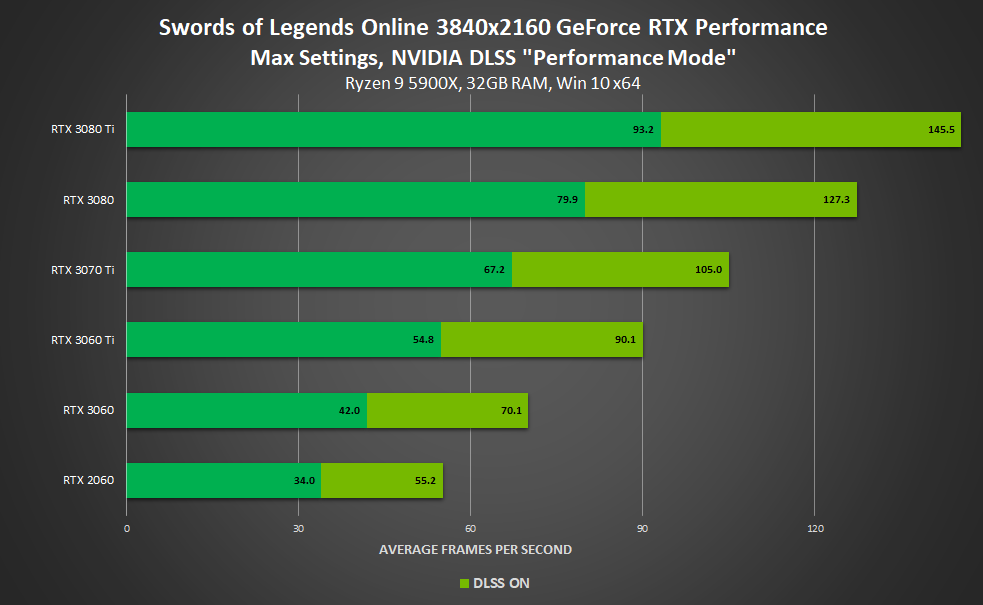
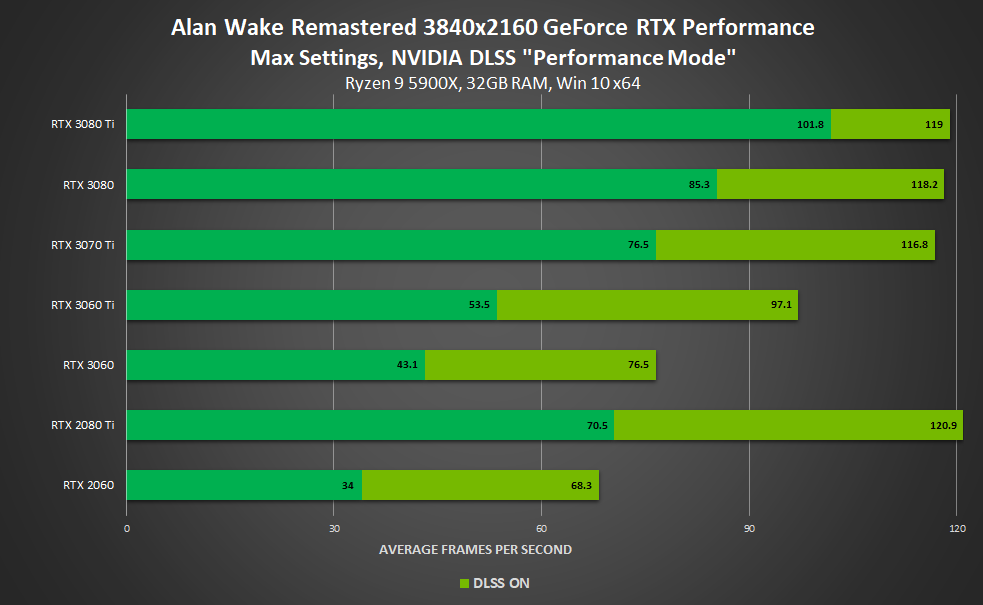
Three of the games are already available (Back 4 Blood, FIST: Forged in Shadow Torch, and Alan Wake Remastered). Baldur's Gate 3, Sword of Legends Online, and the Crysis Remastered Trilogy will receive the update later this week, with the Crysis update coming at the same time as the game's official release on October 15th. The DLSS updates for Shadow of the Tomb Raider and Rise of the Tomb Raider will be happening on October 18th, Sword and Fairy 7's update comes on October 21st, and Chivalry 2 will be updated on October 26th.
We likely won't be running detailed benchmarks on most of these games, though we have poked around at FIST a bit and found it to be quite demanding. Back 4 Blood meanwhile is the long-awaited unofficial sequel to the Left 4 Dead series, and we suspect that will prove equally popular for quite some time — especially this month with all the Halloween goodness going on.
Get Tom's Hardware's best news and in-depth reviews, straight to your inbox.

Aaron Klotz is a contributing writer for Tom’s Hardware, covering news related to computer hardware such as CPUs, and graphics cards.
-
warezme I guess they left the old 2080ti out of most of these scores because they were to embarrassed to show beating the new cards with DLSS.Reply -
TechyInAZ Replywarezme said:I guess they left the old 2080ti out of most of these scores because they were to embarrassed to show it kicking the newer cards asses with DLSS.
That's exactly what I was thinking! More 2nd gen tensor cores are better than fewer 3rd gen tensors. 🤣 -
spongiemaster Reply
? The 2080 Ti is a one generation old $1300+ card. In the one chart it is included in, the only 3000 series cards it beats are the 3060 and 3060Ti which are $400. The 2080 Ti should be beating those cards. It loses to the $600 3070Ti which has a mining inflated MSRP.warezme said:I guess they left the old 2080ti out of most of these scores because they were to embarrassed to show it kicking the newer cards asses with DLSS.
Again, in the one chart that includes the 2080Ti. The 3060 Ti sees an 85% gain from DLSS, the 3060 sees a 67% gain, and the 2080Ti sees a 42% gain. How are you calculating that more 2nd gen are better than fewer 3rd gen?TechyInAZ said:That's exactly what I was thinking! More 2nd gen tensor cores are better than fewer 3rd gen tensors. 🤣 -
TJ Hooker Replyspongiemaster said:? The 2080 Ti is a one generation old $1300+ card. In the one chart it is included in,
The 2080 Ti is in two charts, 1st and last. In the last one it is the best performing card with DLSS on, beating even the 3080 Ti.
Edit: as pointed out below, I missed the part about the results for the last one (Alan Wake) being skewed by an in-game fps cap. -
JarredWaltonGPU Reply
Pretty sure it only beats the other cards in Alan Wake Remastered because the game implements a 120fps cap — and then odd things can cause some 'faster' cards to not quite hit the cap, while other 'slower' cards can slightly exceed it.TJ Hooker said:The 2080 Ti is in two charts, 1st and last. In the last one it is the best performing card with DLSS on, beating even the 3080 Ti. -
russell_john It's about time they updated SoTTR .... DLSS 1.x in it is complete and utter garbage and the Ray Traced shadows aren't much to brag about eitherReply -
JarredWaltonGPU Reply
QFT! I haven't seen any RT shadows that make me think, "Wow! Those are so much better!" Not worth the 10% performance hit.russell_john said:It's about time they updated SoTTR .... DLSS 1.x in it is complete and utter garbage and the Ray Traced shadows aren't much to brag about either -
korekan it would be awesome if there is no need for dev to make changes and it can be activated for any games.Reply
just like when you run older games and found that nowadays cpu power is extremely faster that the game instantly ended because you seems not moving for 0.00001 sec and the enemies already eating you -
JarredWaltonGPU Reply
So, you can't do DLSS or FSR (or any other upscaling) "properly" unless you only upscale the rendered graphics and then apply the UI and HUD elements at native resolution. Basically, you don't want to use FSR or DLSS on text, or on various other static elements, or it looks noticeably worse. For this reason, best practice means a game has to integrate the technology directly. It's certainly possible to use the algorithms and just upscale everything, but it doesn't look as nice. In fact, there's a wrapper for FSR that does exactly that (on Linux). But at that point, you may as well just run the game at a lower resolution and let your monitor do the upscaling.korekan said:it would be awesome if there is no need for dev to make changes and it can be activated for any games. -
korekan Reply
well we have AI already, maybe next gen or more gen will use it dynamically and properly without human intervention.JarredWaltonGPU said:So, you can't do DLSS or FSR (or any other upscaling) "properly" unless you only upscale the rendered graphics and then apply the UI and HUD elements at native resolution. Basically, you don't want to use FSR or DLSS on text, or on various other static elements, or it looks noticeably worse. For this reason, best practice means a game has to integrate the technology directly. It's certainly possible to use the algorithms and just upscale everything, but it doesn't look as nice. In fact, there's a wrapper for FSR that does exactly that (on Linux). But at that point, you may as well just run the game at a lower resolution and let your monitor do the upscaling.
less work on things that can be automated is good so we can more to more creative story or gameplay mechanics
